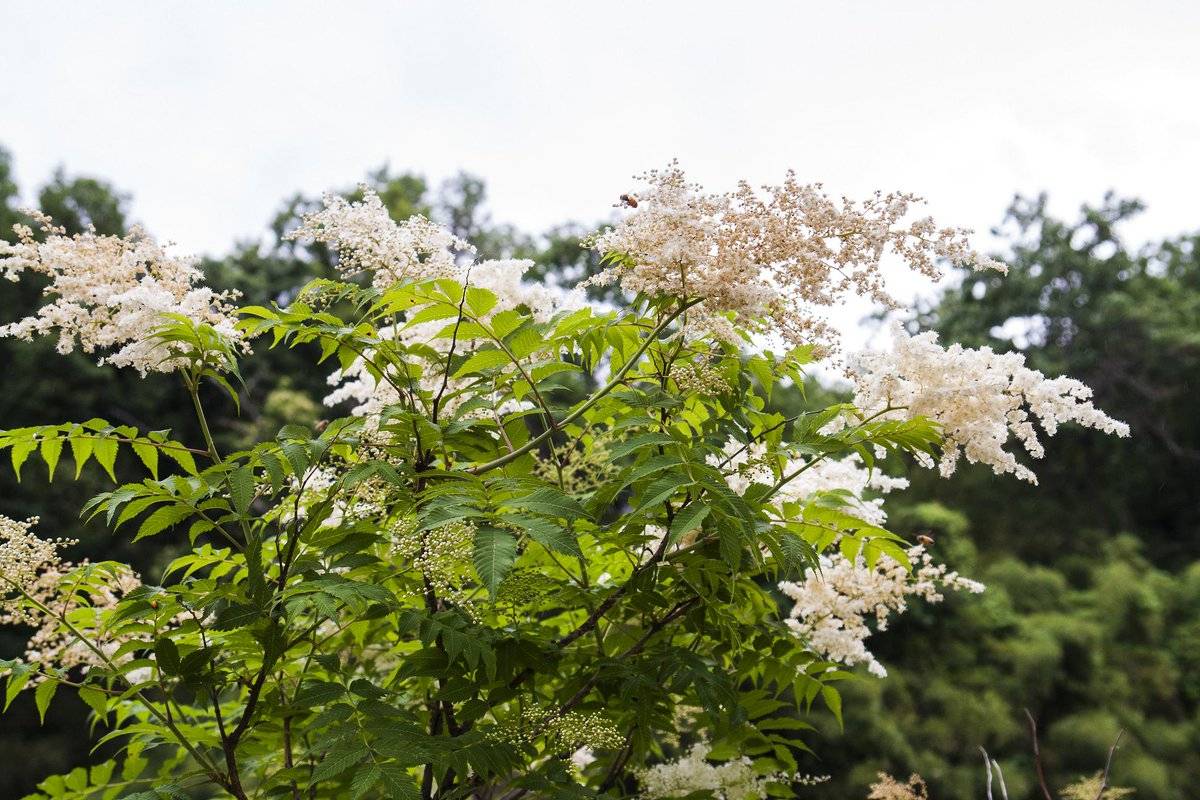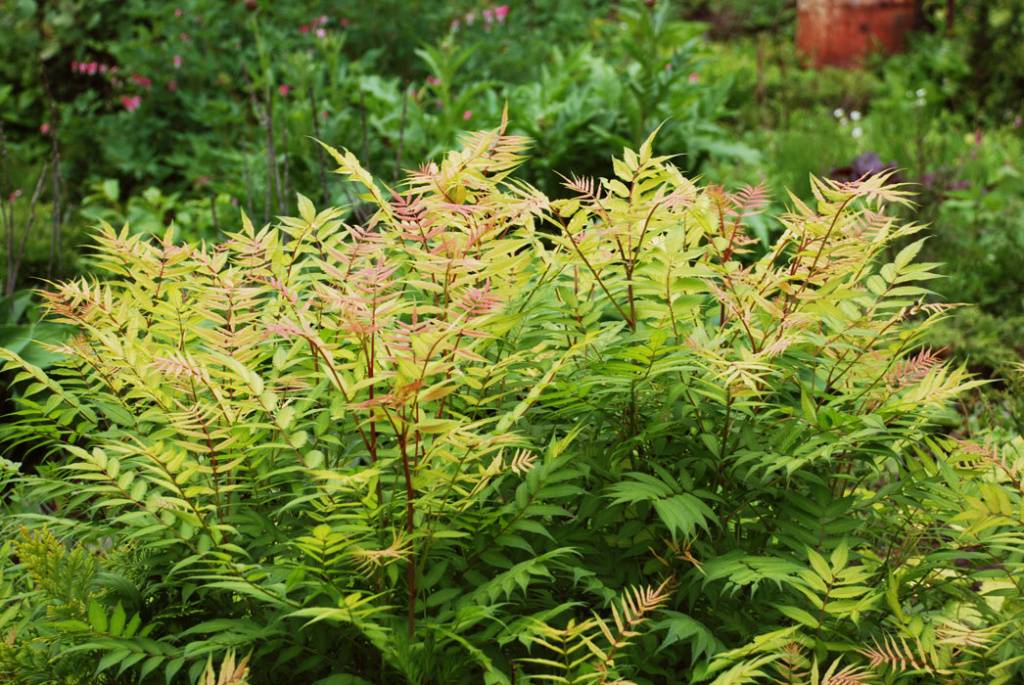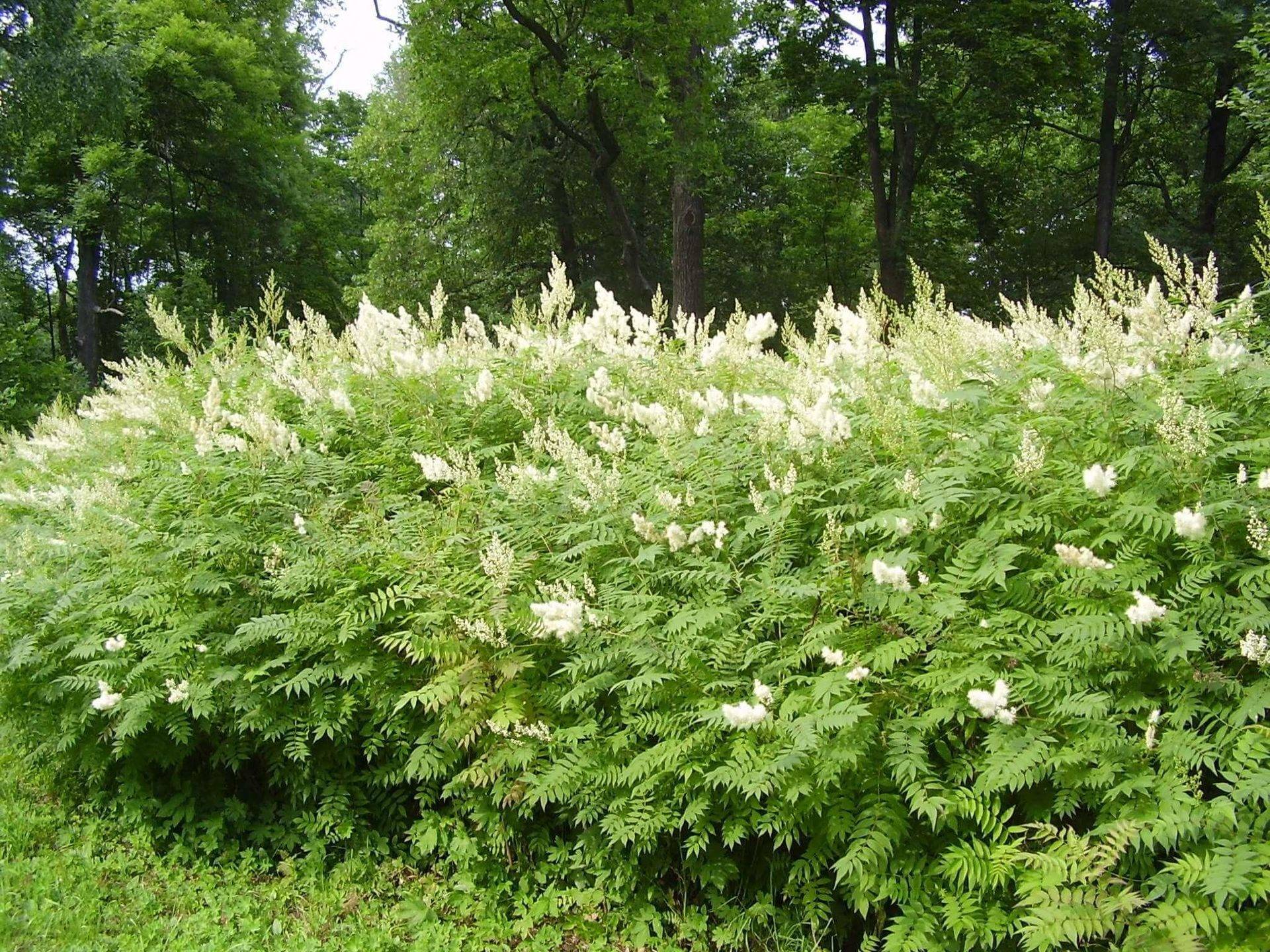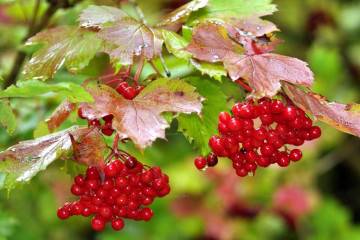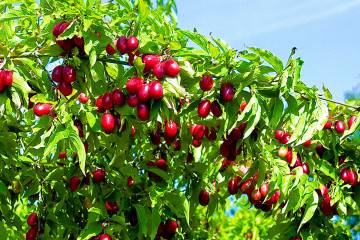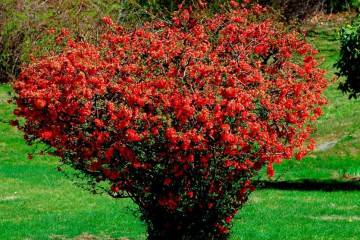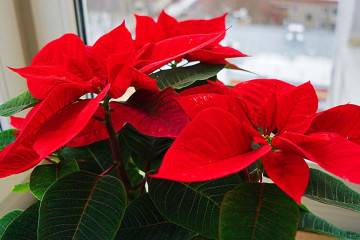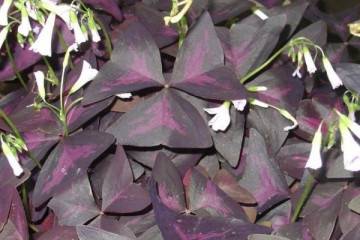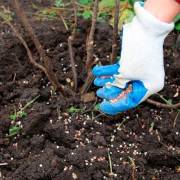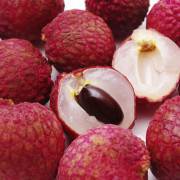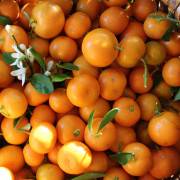Fieldfare - a shrub with leaves like rowan
Content:
Fieldfare grows very quickly, forming dense thickets. Therefore, it is often used in hedges. It also looks spectacular in single landings on the site. Due to its characteristics, the mountain ash bush is an almost universal plant.
Description of mountain ash bush
The field ash bush is widespread in Asia, found in some regions of Europe with a temperate climate. This allowed breeders to develop several varieties of the crop that are widespread in North America. In total, there are 10 varieties of fieldfare, but only a couple of them are most used in our area.
In fieldfare, the leaves are usually similar to the leaves of a rose bush, but larger in size. The trunk is gray-yellow or reddish brown. The plant blooms with large panicle inflorescences, consisting of many small buds of a white or cream shade.
Fieldfare bloom
Light inflorescences against a background of bright green leaves look very presentable. Blossoming in fieldfare is long: from early June to mid-late August. To prolong it, the wilted inflorescences are removed. When used in landscape design, fruits are not expected to ripen, because they do not look as impressive as inflorescences.
Fieldfare in landscape design
A plant with leaves like rowan is widely used by landscape designers. It can be successfully integrated into any composition in the garden or in the park.
Most often, fieldfare can be found on the site in the following form:
- the center of the landscape composition, the top of all colors;
- hedge;
- combination with trees with a high open trunk;
- harmonious composition with coniferous trees.
Popular varieties of mountain ash bush
Two varieties of Pallas and Sam are well suited for growing in the climate of central Russia.
Pallas mountain ash bush
This variety grows in the Trans-Urals, therefore it is perfectly adapted to a sharp change in weather and temperature jumps. The bush reaches a height of 1-1.2 m. It has a round shape due to lush spreading branches. Pallas has large dark green leaf plates. The inflorescences consist of many flowers of a milky or creamy shade.
Fieldfare Sam
A more compact shrub, round and short (no more than 80 cm). It has light green foliage with a reddish tint around the edges. The buds of this variety are white and have an unusual, slightly elongated shape. Each flower has stamens that extend beyond the petals, so the plant seems especially lush and elegant.
Features of growing mountain ash
Planting and caring for fieldbushes requires only basic knowledge of agricultural technology. For example, you need to choose the right time for planting on the site. It is better to do this in mid-March, when the juice has not yet begun to move. If it is planned to plant a shrub with leaves like mountain ash in the open ground in the fall, then you need to wait for the foliage to fall off the plants.
The rowan leaf does not like direct sunlight, so it is better for it to choose a place that is in the shade for most of the daylight hours (for example, the shade from tall trees).
The step-by-step planting process is as follows:
- A 40 × 40 cm pit is dug in the ground.
- Drainage is laid out in the form of sand or expanded clay on the bottom of the recess.
- A small layer of fertile soil is poured (with nitrogen in the composition).
- The seedling is set in a pit.
- The roots are covered with soil, which is lightly compacted.
- A small hole is formed to retain moisture at the roots.
- The seedling is watered abundantly.
Fieldfare propagation
Most often, cuttings or layering are used for propagation of fieldfare.
Propagation by cuttings
A fairly simple method, therefore, it is more widespread than the rest. Cuttings 20-30 cm long are cut from strong branches that already have bark. They are placed in a container with soil. During their rooting, it is necessary to control the moisture in the soil.
Growing from cuttings
When propagating by layering in the spring, they take a long shoot, bend it to the ground and sprinkle it with soil on top. In this case, the top itself should look out of the ground. After a while, roots will grow on the part of the shoot that is in the soil. It must be separated from the mother bush, transplanted to a new place and looked after according to the rules.
Field care
Caring for the bush is limited to elementary rules and does not present any particular difficulties. The ornamental mountain ash shrub requires constant soil moisture, it does not tolerate drought well. Especially carefully you need to monitor the moisture content of the soil in the area with young plants.
For one watering of each bush, you should use a couple of buckets of water. As a rule, fieldfare should be watered 2 times a month. In hot weather, the amount of watering should be increased and the moisture content of the soil should be monitored more closely.
The mountain ash-like shrub requires frequent feeding with organic fertilizers. They should be brought into the near-barrel space. Of the mineral elements, the garden culture accepts nitrogen, phosphorus and potassium well, they can be applied in any form.
Features of care during periods of flowering and rest
Care during flowering is practically no different from care at other periods of the plant's life. It is only required to monitor soil moisture and cut off wilted inflorescences. At the end of the flowering season, you should trim off all wilted inflorescences and dried leaves. Watering during the rest period is brought to the minimum dosage.
Excellent frost-resistant qualities allow the mountain ash bush to survive the winter even with the most severe cold and without any preparation.
The fieldfare is not only an unpretentious shrub to care for, but also a real decoration of any site. In a composition with tall coniferous or deciduous trees, it will add zest to the landscape, delighting with its graceful color and fringed foliage.

